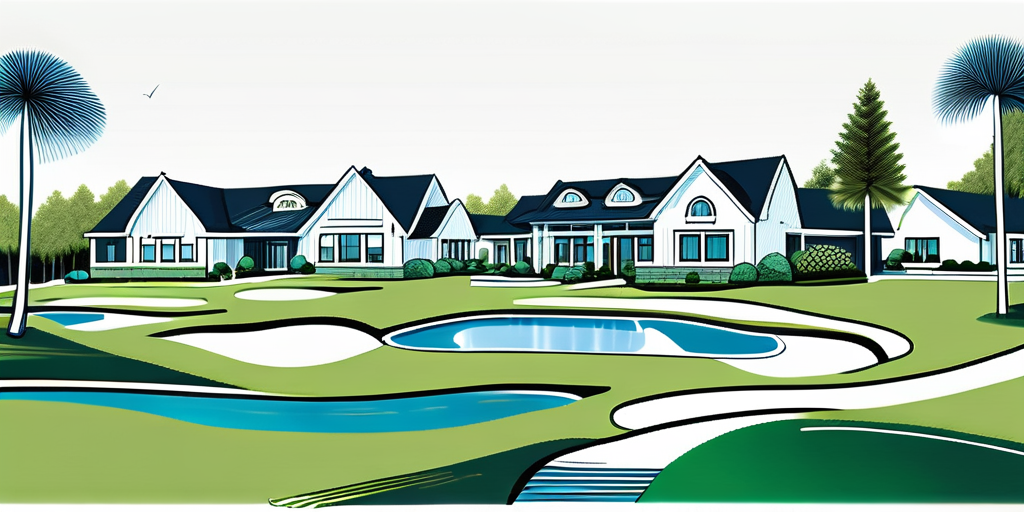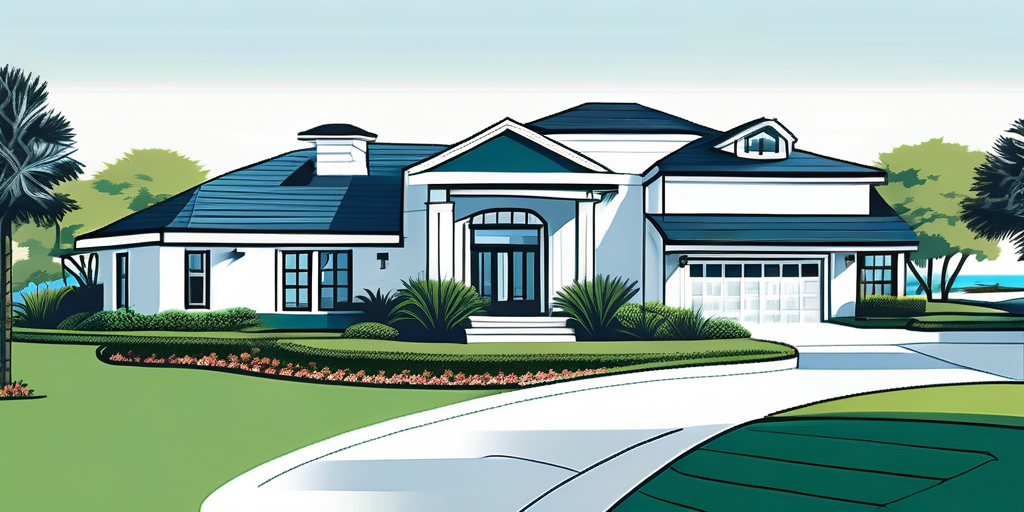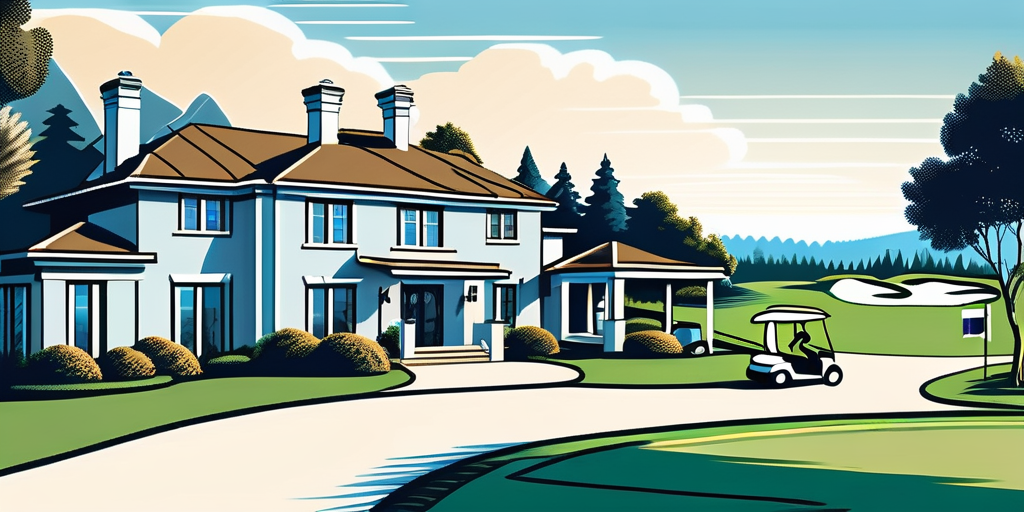
If you're a golf enthusiast or simply looking for a unique investment opportunity, golf properties represent some of the most desirable real estate options available. This article will guide you through understanding golf property real estate, identifying prime opportunities, and tips for buying and selling these coveted properties.
Golf properties are not just about the love of the game; they're about lifestyle, luxury, and community. Owning a property close to a golf course can provide not only a beautiful view but also access to a vibrant community of fellow golf lovers.

The charm of golf properties lies in their unique design and harmonious integration with nature. Picture sprawling greens, pristine lakes, and meticulously maintained landscapes. These properties often serve as havens for relaxation and leisure, allowing homeowners to indulge in their passion for golf without leaving the comfort of their homes.
Additionally, the amenities offered at golf communities typically enhance the appeal. Many come with exclusive access to clubhouses, swimming pools, fitness centers, and dining options, making them more than just a place to live; they become a lifestyle choice. Many golf communities also host social events, tournaments, and gatherings that foster a sense of camaraderie among residents, creating a tight-knit community where friendships flourish. This social aspect can be particularly appealing for retirees or those looking to connect with like-minded individuals who share a passion for the sport.
When considering golf real estate, certain features set these properties apart from the rest. Key features often include:
These elements not only enhance the living experience but can also contribute significantly to the property's value over time. For instance, homes that are strategically located near the first tee or the 18th hole often see a premium in their market value due to the desirability of their location. Furthermore, many golf properties are designed with large windows and open floor plans to maximize views of the course, allowing residents to enjoy the beauty of their surroundings year-round. The integration of sustainable landscaping and eco-friendly building materials is also becoming increasingly common, appealing to environmentally conscious buyers who appreciate both luxury and sustainability.
Finding the right golf property is all about knowing what to look for. Here, we break down some of the essential factors to consider when scouting for your perfect property.

Location is paramount in real estate, and golf properties are no exception. Look for communities that are easily accessible from major highways or urban centers. A convenient location not only enhances your enjoyment of the property but also its potential resale value.
Selecting a community near reputable golf courses can significantly boost your property’s desirability. You want to consider proximity to other amenities like restaurants, shopping centers, and recreational facilities, as these can enhance your lifestyle and investment. Additionally, being part of a vibrant community can offer a sense of belonging and provide opportunities for social engagement, making it easier to connect with like-minded individuals who share your passion for golf.
The size of the property and its layout are crucial in both practical and aesthetic terms. A larger lot may offer more space for gardening, entertaining, or simply enjoying the views. However, it also comes with increased responsibility for maintenance, which some buyers might want to avoid.
Moreover, the layout of the house should ideally flow well with outdoor spaces. Open-concept designs that blend indoor and outdoor living are particularly desirable in golf communities. They foster social interactions and offer splendid views of the courses. Consideration should also be given to the orientation of the property; a south-facing backyard can provide ample sunlight throughout the day, enhancing outdoor enjoyment and creating a warm, inviting atmosphere for gatherings.
Golf properties often come accompanied by a range of amenities that can elevate your living experience. Common offerings include:
Before purchasing, it’s wise to take note of the specific amenities available in each community, as they can add substantial value and enrich your lifestyle. Furthermore, many golf communities host regular events and tournaments, providing residents with opportunities to participate in friendly competitions or simply enjoy the camaraderie of fellow golf enthusiasts. This sense of community can be a significant draw, making your property not just a home, but a hub for social activities and shared interests.
The investment potential of golf properties often makes them attractive. However, like any investment, understanding market dynamics is essential.
Golf real estate markets can fluctuate based on various factors such as economic conditions, regional demand, and demographic trends. Areas with a growing population and increasing interest in golf often see a rise in property values.
Monitoring market trends can provide insights into the best times to buy or sell golf properties. Local statistics on sales, inventory levels, and the comparisons of similar properties can help inform your real estate decisions. Additionally, the rise of remote work has led to a surge in demand for properties in leisure-oriented communities, including golf courses, as individuals seek a lifestyle that balances work and recreation. This shift has created new opportunities for investors to capitalize on the changing preferences of homebuyers.
As with any real estate investment, it’s vital to set expectations for returns. Golf properties can provide a solid ROI if chosen wisely and maintained well. Historically, properties in golf communities have appreciated in value, making them appealing for long-term investments.
Being well-informed about property management, rental opportunities, and the general economic climate will enable you to maximize your investment potential in golf real estate. Furthermore, the allure of golf properties often extends beyond mere financial returns; they offer a lifestyle that attracts affluent buyers looking for a community-focused environment. Many golf communities also provide exclusive amenities such as clubhouses, fitness centers, and social events, which can enhance property values and appeal to potential renters or buyers. Understanding these lifestyle factors can be just as crucial as analyzing the numbers when considering an investment in golf real estate.
When it comes to buying golf properties, preparation and knowledge are crucial. Here are some helpful tips that can guide you through the process.
Before finalizing your purchase, it's essential to assess the condition of the property thoroughly. Look for any signs of wear and tear, particularly in areas that are frequently used such as kitchens and bathrooms.
Consider hiring a professional inspector who specializes in golf properties to ensure that everything is up to standard. A thorough inspection can save you from unexpected repair costs down the line. Additionally, pay attention to the exterior of the property, including the roof, siding, and landscaping. These elements not only contribute to the overall aesthetic appeal but can also indicate how well the property has been maintained over the years. If the golf property is part of a community, inquire about the maintenance of shared amenities like pools, clubhouses, and golf courses, as these can significantly impact your living experience.
Negotiation is an integral part of purchasing real estate. Be prepared for this stage by having a clear understanding of the property's market value, comparable sales in the area, and any red flags that may affect your offer.
Don't be afraid to make an offer below the asking price, especially if issues arise during your inspection. A well-prepared buyer can negotiate successfully and get the best deal possible. Additionally, consider the timing of your offer; properties may be more negotiable during slower seasons or if they have been on the market for an extended period. It can also be advantageous to understand the seller’s motivations—whether they are looking for a quick sale or are willing to wait for a higher price—so you can tailor your approach accordingly. Building rapport with the seller can also create a more favorable negotiation atmosphere, making it easier to reach an agreement that benefits both parties.
If you're looking to sell your golf property, presenting it in the best light is vital. The following tips can assist you in making your property more attractive to potential buyers.

Curb appeal matters more than ever when selling golf properties. Invest time and resources into landscaping, enhancing outdoor areas, and ensuring that both the interior and exterior of your property look immaculate.
Consider stage-setting options such as decluttering, painting, and minor repairs to make your property more appealing. A well-presented property can capture the attention of buyers and lead to quicker sales at higher prices. Additionally, highlight unique features that are attractive to golf enthusiasts, such as proximity to the course, views of the greens, or exclusive community amenities. These elements can significantly enhance the perceived value of your property.
Don't underestimate the power of professional photography and virtual tours. High-quality images that showcase your property in its best light can make a substantial difference in attracting potential buyers. With many buyers starting their search online, a visually appealing listing can set your property apart from the competition and draw more interest.
One of the most significant factors in selling any property is pricing. Too high, and you may scare off potential buyers; too low, and you could lose out on valuable equity.
Conduct market research to compare similar properties in your area, factoring in your property's unique features and condition. A real estate agent experienced in golf properties can provide invaluable assistance in setting an appropriate price point. Additionally, consider the seasonality of the golf market; selling during peak golfing seasons can attract more buyers who are eager to settle into their new homes before the next golfing season begins.
Another strategy to consider is offering incentives, such as covering closing costs or including golf club memberships, which can entice buyers and make your property more appealing in a competitive market. Understanding the motivations of potential buyers can help you tailor your pricing strategy effectively, ensuring that you attract the right audience while maximizing your return on investment.